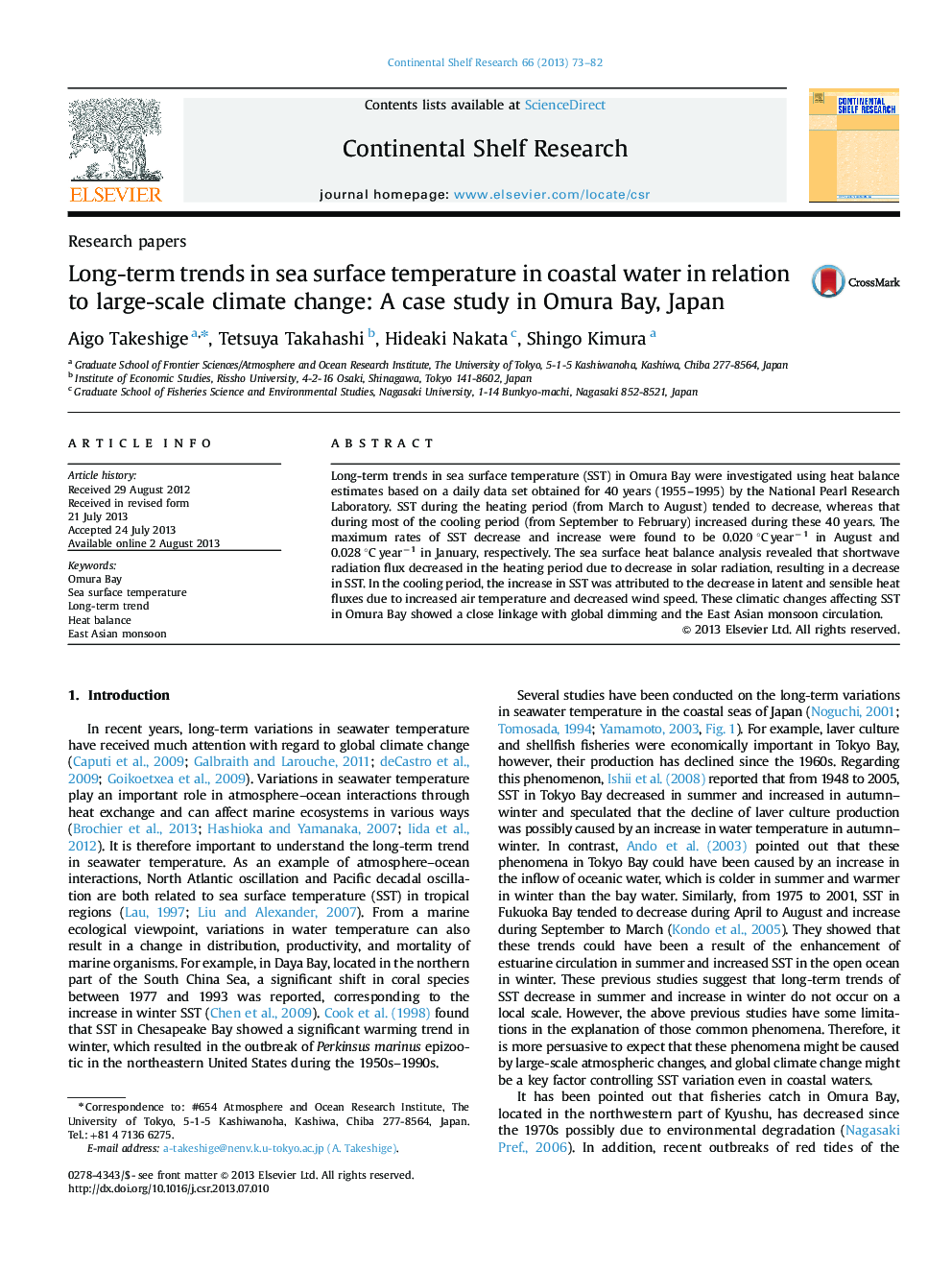| Article ID | Journal | Published Year | Pages | File Type |
|---|---|---|---|---|
| 6383286 | Continental Shelf Research | 2013 | 10 Pages |
Abstract
Long-term trends in sea surface temperature (SST) in Omura Bay were investigated using heat balance estimates based on a daily data set obtained for 40 years (1955-1995) by the National Pearl Research Laboratory. SST during the heating period (from March to August) tended to decrease, whereas that during most of the cooling period (from September to February) increased during these 40 years. The maximum rates of SST decrease and increase were found to be 0.020 °C yearâ1 in August and 0.028 °C yearâ1 in January, respectively. The sea surface heat balance analysis revealed that shortwave radiation flux decreased in the heating period due to decrease in solar radiation, resulting in a decrease in SST. In the cooling period, the increase in SST was attributed to the decrease in latent and sensible heat fluxes due to increased air temperature and decreased wind speed. These climatic changes affecting SST in Omura Bay showed a close linkage with global dimming and the East Asian monsoon circulation.
Related Topics
Physical Sciences and Engineering
Earth and Planetary Sciences
Geology
Authors
Aigo Takeshige, Tetsuya Takahashi, Hideaki Nakata, Shingo Kimura,
